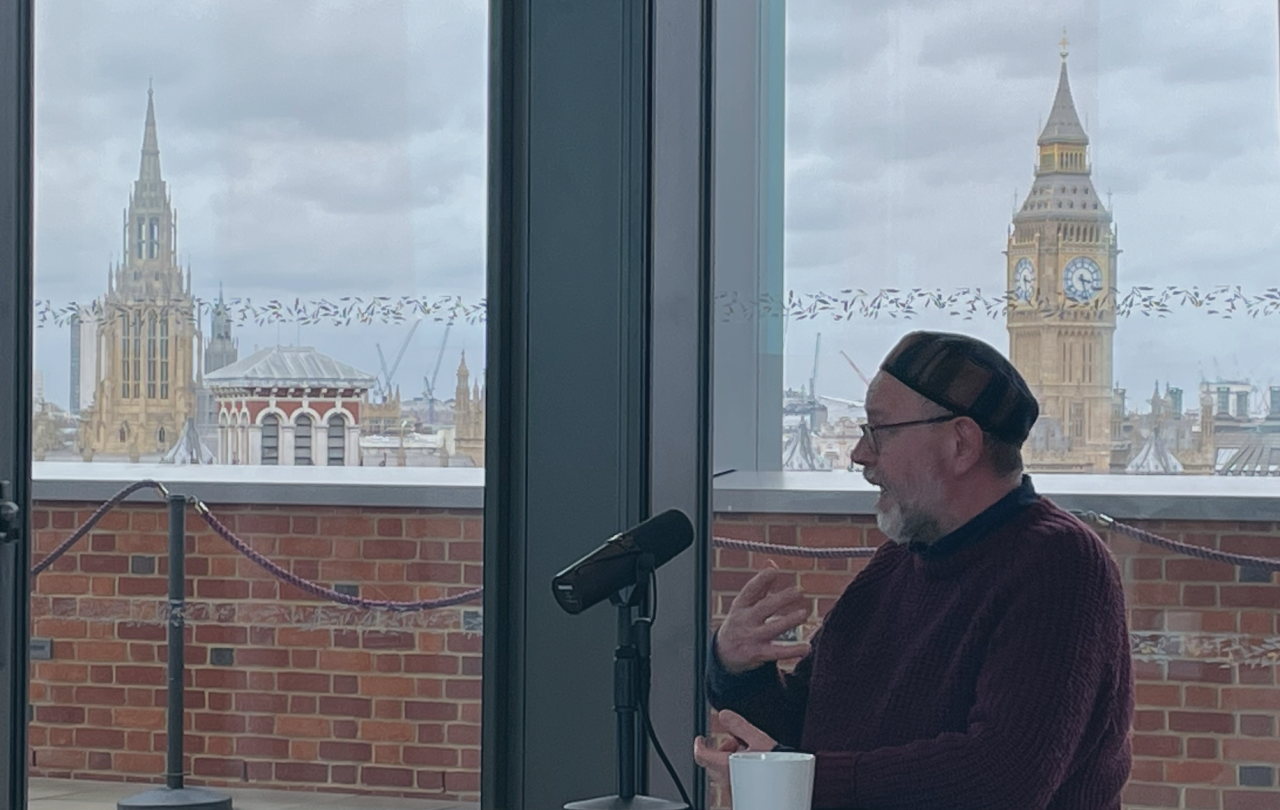Early on in the film, Vera slips a puffa jacket over her black habit and gallops across the snow on a white horse. Without giving away too many spoilers, Vera’s desire for a life beyond the borders of the monastery grows as her story develops. Visits to her family show adolescent nephews and godsons growing into strapping maturity in her absence. Her mother relates the time Vera overdosed, 20 years ago, and doctors told her “to prepare for every outcome.” Vera reflects on how her charisma influenced “fresh faced girls” to become heroin users. For Vera, heroin went from being a portal of insight and revelation, to “showing its true face” which was diabolic. In monastery community meetings men praise how Mother Vera helped them to “reconstruct”.
Vera initially joined the monastery for a year, to wait out her partner’s prison sentence. Twenty years on, she has reached a new phase of her own reconstruction. Immersing herself in a river, her parting words are: “Let’s move on. Let’s continue. Amen.”
The community at Saint Elizabeth Monastery echoes the residents of W-3, the psychiatric ward in the American teaching hospital described in Bette Howland’s memoir W-3 first published in 1974, and republished four years ago. The author is admitted to hospital following an overdose, while she struggles to raise two children alone, on a part time librarian’s wage, while also trying to write. “For a long time it had seemed to me that life was about to begin – real life. But there was always some obstacle in the way. Something to be got through first, some unfinished business; time to be served, a debt to be paid. Then life could begin. At last it had dawned on me these obstacles were my life. I was always rolling these stones from my grave.”
Howland positions the institutionalised rhythms of the hospital as the supreme life force, and ultimately more curative than talking therapy or medication. “For the sick in their beds were invisible. They were there only by implication. They must have existed, if only for the sake of this other life, full of importance – the bustling arms, starched coats; the carts, mops, ringings, beepings; the brisk comings and goings of white stockinged nurses.” The invisible, timeless guiding spirit of the hospital “as mysterious as a submarine”, would prevail regardless of what the medical staff or patients did, or resisted doing. Realising they were not the ones calling the shots, was the first step for Howland and her fellow patients to returning to life outside the hospital.
Accepting community and kinship, rather than superiority or aloofness, with others in recovery is also a key feature of Saint Elizabeth Monastery and W-3. “Nothing was original on W-3, that was its truth and beauty,” writes Howland. And continually telling and re-telling her story to fresh batches of medical students, under a psychiatrist’s supervision, eventually allowed it to be transcended. “It is not strictly accurate to say that these interviews were of no use to us. Because you would have to tell your story yet once more, all over again. And each retelling, each repetition, hastened the time when you would get tired of it, bored with it, done with it – let go of it, drop it forever – could float away and be free.”
In Mother Vera members of the lay community argue about accepting a new member, who may have been raped in prison, and is labelled a “downcast”. But the argument against allowing prison hierarchies to overshadow their new community wins the day, with the new member being integrated, and objectors accepting “you are no better than him.”
Contemporary approaches to mental health and wellbeing also pivot on an acceptance of shared humanity and imperfect day to day life with its relentless demands, as well as acknowledgement of a power outside human control. In the Netflix documentary Stutz, actor Jonah Hill charts his sessions with Hollywood psychotherapist Phil Stutz. Stutz counsels his clients there is no escape from pain, uncertainty and hard work. To try to avoid these conditions, whether through fantasy or substance or addiction, is to live in the Realm of Illusion. Progress and satisfaction can only be achieved by embracing the here and now, and doing the next necessary thing for life to continue. Stutz calls these actions the String of Pearls, urging his clients to be the one to put the next pearl on the string. The outcome of the action is immaterial, it is the self -belief fostered by taking real world positive action in support of self-flourishing, that is critical.
Stutz believes in a force for good he calls Higher Forces, and a malign force thwarting human growth he calls Part X. For Mother Vera her latter days at the monastery when she felt she could be of more service in the outside world were “tricking God”.
From a Minsk monastery to a Hollywood therapist’s office, to a 1970s hospital, an acknowledgement of the divine, together with an embrace of each other and demands of daily life, emerge as key tenets of recovery’s long road.
Mother Vera is released in the UK from 29 August.






